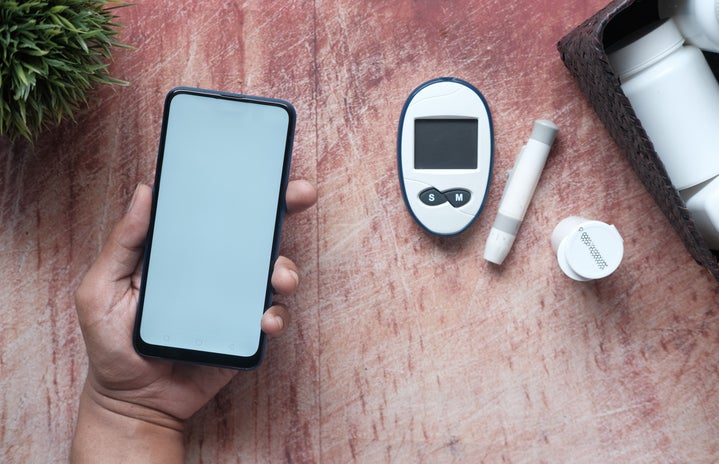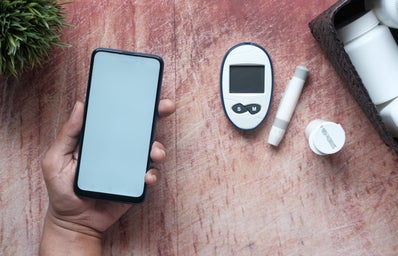November is a special month for me because it is a time for me to advocate for diabetics and spread awareness of my chronic illness. I have been type 1 diabetic since the age of five. I have been living with diabetes for 16 years now, so I have learned a lot about managing it through day-to-day life. According to the American Diabetes Association (ADA), more than one in five people in the United States who has diabetes doesn’t even know they have it. This equates to 7.3 million people out of a total of 34.2 million. It is scary to think these individuals are unaware they are living with diabetes, especially due to the health risks that poorly managed blood sugars pose.
National Diabetes Awareness Month aims to spread awareness and education of the different types of diabetes, their signs and symptoms, and how to properly manage a life with diabetes. Complications can arise from this disease, putting people at risk for nerve damage, cardiovascular disease, foot and limb injuries, and vision problems.
There are three major types of diabetes. Type 1 diabetes occurs when the immune system destroys cells within the body that make insulin, a hormone that regulates blood sugar. In this case, your pancreas, which plays an essential role in converting food into fuel for your body’s cells, stops producing insulin. Insulin is an essential hormone. It allows glucose to enter the body’s cells to provide energy. Excess glucose is stored in the liver in the form of glycogen. As of right now, there is no cure for type 1 diabetes. It is most common in children and young adults, deeming it the name “juvenile diabetes.” Individuals living with this type need to continually monitor blood sugars either through a continuous glucose monitor (CGM) or with manual finger pricks. They need to take injections or wear an insulin pump so they are able to receive regular insulin dosages throughout the day.
Type 2 diabetes is the most commonly diagnosed type. This occurs when the body is not able to use insulin properly to regulate blood sugar. It is an insulin resistance. There are a variety of factors that contribute to a diagnosis of type 2 diabetes, including: genetics, extra weight, metabolic syndrome, too much glucose in the liver, bad communication between cells, and broken beta cells. This type of diabetes is lifelong as well and more commonly occurs in middle age to older adults. Treatment options include either medications, long-lasting insulin, or a combination of both depending on their needs. For example, Metformin is one of the most popular medications for type 2 diabetes. This drug lowers the amount of glucose the liver makes and helps your body respond better to the insulin it does produce.
Finally, a temporary type of diabetes is gestational diabetes which women can develop during pregnancy. Every year, 2% to 10% of pregnancies in the United States are affected by it. It basically happens when your body cannot make enough insulin during your pregnancy. There are risks associated with gestational diabetes, including high blood pressure during pregnancy, increased risk of having a large baby that needs to be delivered through a C-section, and health complications for the baby itself. These women’s blood sugars will usually return to normal after the birth, however, 50% of women with gestational diabetes will develop type 2 diabetes. It is crucial to have regular check-ups with your doctor and monitor your blood sugars and dietary choices.
For me personally, I wear the Omnipod insulin pump which is tubeless. It communicates wirelessly with my Personal Diabetes Manager (PDM) device. So for example, when I eat breakfast and calculate my carbohydrates, I plug my blood sugar reading and amount of carbohydrates for my meal into my PDM. Based on the settings I review with my doctor and program into the pump, it will ultimately calculate how many units of insulin it will deliver for my meal. I press “Enter” and it delivers the insulin dosage through my pump attached to me. I have to change it every three days which is the usual rotation for wearing an insulin pump. You have to rotate where you inject your sites so one area does not become sore, bruised, or infected.
Having this chronic illness since age five made me appreciate life and to not take it for granted. I always tell myself it could have been worse or life-threatening. I can learn to live with and properly manage diabetes, unlike some terminal illnesses. I am grateful for the lessons it has taught me, such as depending on myself and learning how to manage it. It taught me to be responsible and self-sufficient so I don’t have to rely on others to take care of me. Don’t get me wrong; there are days I just want to escape diabetes and not deal with it. I experience diabetic burnout from time to time. Unfortunately, having diabetes, like any other chronic illness, is a 24/7 job. You cannot afford to not take care of yourself.
I want to use my story and experience to educate and inspire other people. More and more people are being diagnosed with diabetes every day, and the rates are increasing. Being able to recognize the signs and symptoms of this common disease is crucial. You never know if you or a loved one will experience it. With this being said, Diabetes Awareness Day is November 14th every year. Supporters chose this date in honor of Sir Frederick Banting, who, with Charles Best, discovered insulin in 1922. In fact, on January 23, 1923, Banting, Best, and Collip were awarded the American patents for insulin. They sold the patent to the University of Toronto for $1 each. Banting’s famously stated, “Insulin does not belong to me, it belongs to the world.” His dream was for everyone who needed it to have access to it.
I hope this article taught you something new about diabetes, or at least exposed you to the three different types. Join me in spreading awareness of diabetes and wearing blue in support of Diabetes Awareness Day on November 14th!
HCXO,
Rachel
Resources used to compile this article:
https://www.everydayhealth.com/diabetes/awareness-month/
https://www.webmd.com/diabetes/type-2-diabetes


